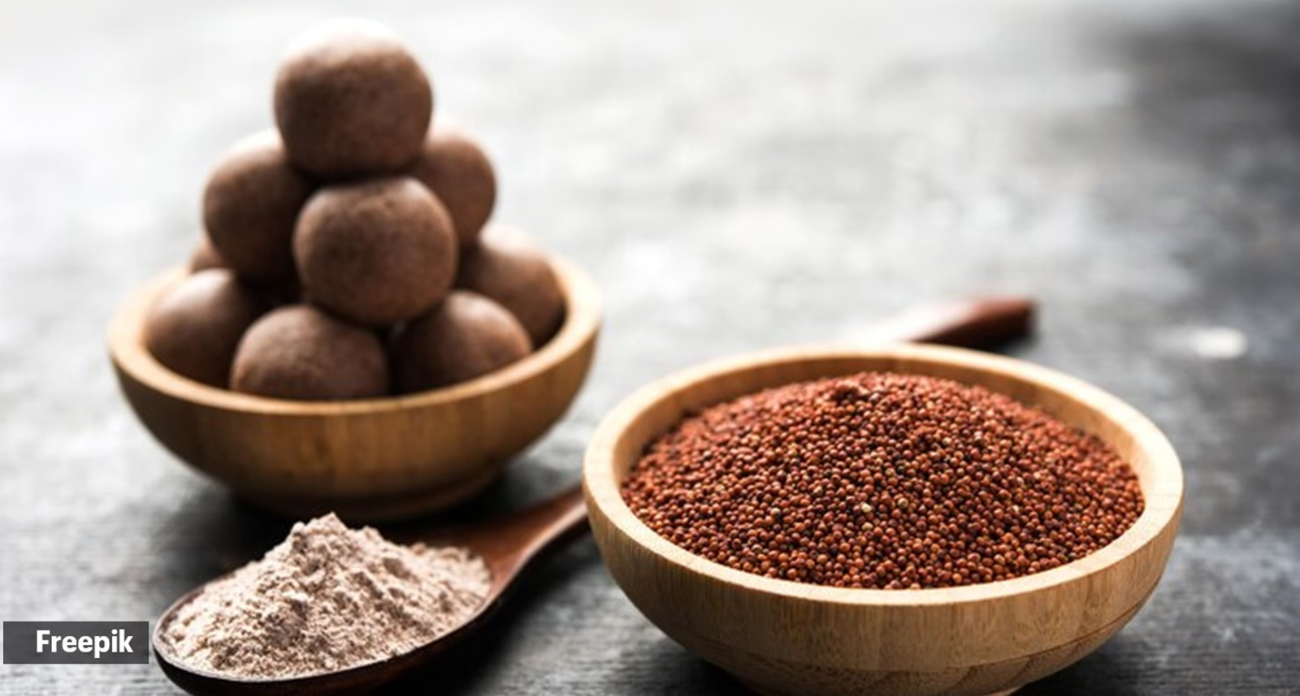
7 Health Benefits of Ragi
A generation ago, many Indians, especially in the southern part of the country, were familiar with ragi or finger millet (Eleusine coracana L.). The once well-known cereal is however totally absent in most people’s diets today. This is quite surprising and unfortunate, considering the nutritive and therapeutic value of finger millet for the human body. Besides, it is a very adaptable crop that is admirably suited to Indian climatic conditions, making it doubly significant. Let’s take a look at a few of the benefits of finger millet, and some delicious recipes for ragi laddus, cookies and pakodas!
Finger millet originated in Africa and has been cultivated for many thousands of years in Uganda and Ethiopia. In India, the crop was probably introduced 4000 years ago, and has been found in archeological excavations in the Harappan Civilization.


#2 Ragi is a Rich Source of Minerals
Ragi is also a very rich source of minerals. It has been found to have between 5-30 times the calcium content found in other cereals. It is also rich in phosphorus, potassium and iron. Calcium is of course an important component in maintaining bone density and health. Thus, finger millet would be a healthier alternative to over-the-counter supplements, especially for people who might be at risk of osteoporosis or low hemoglobin levels.
#3 Ragi Controls Diabetes
The rapid rise in the prevalence of diabetes has led to a great demand for foods containing complex carbohydrates with high dietary fiber levels and beneficial phytochemicals. Phytochemicals are a varied group of chemical compounds derived from plants, which are considered to be important factors in our capacity to combat disease. All these components are usually found in the outer layer of the grain or the seed coat, and so, it is generally a good idea to consume whole grains.
#4 Ragi has Anti-microbial Properties
Finger millet has been found to act against a number of bacteria including Bacillus cereus, which causes food poisoning, Salmonella sp., which causes a typhoid-like fever, and Staphylococcus aureus, one of the primary causes of skin and soft tissue infections such as abscesses, furuncles, and cellulitis.
#5 Ragi has Anti-cancer Potential
Finger millet is also rich in antioxidants, which have sort of become a byword in health books today. Antioxidants prevent excessive oxidation (how surprising!), which could otherwise cause cancer and ageing because of cell damage. The phenolic acids, flavonoids and tannins present in finger millet seed coats have very effective antioxidant properties. In general, it has been shown that people on millet-based diets have lower incidences of esophageal cancer than those on wheat or maize-diets.
#6 Ragi Keeps you Young
Aside from the phenolic content and antioxidants which are important factors in preventing ageing, finger millet and kodo millet have specifically shown potential in inhibiting cross-linking of collagen. Collagen cross-linking is the process by which cross-links form between or within collagen molecules in tendons, skin, and even blood vessels. Collagen is what gives tissues their elasticity, and cross-linking reduces this ability, leading to the stiffness commonly associated with age.
#7 Ragi Reduces “Bad” Cholestrol, Prevents Cardiovascular Disease
Emerging research has shown that finger millet has the potential to reduce risk of cardiovascular diseases. Technically speaking, finger millet reduces concentrations of serum triglycerides and inhibits lipid oxidation and LDL cholesterol oxidation. LDL (Low Density Lipoprotein) cholesterol is what is termed “bad” cholesterol and is especially troublesome when oxidized. Oxidized LDL inflames the arteries, leading to arteriosclerosis and the risk of heart attack or strokes.
